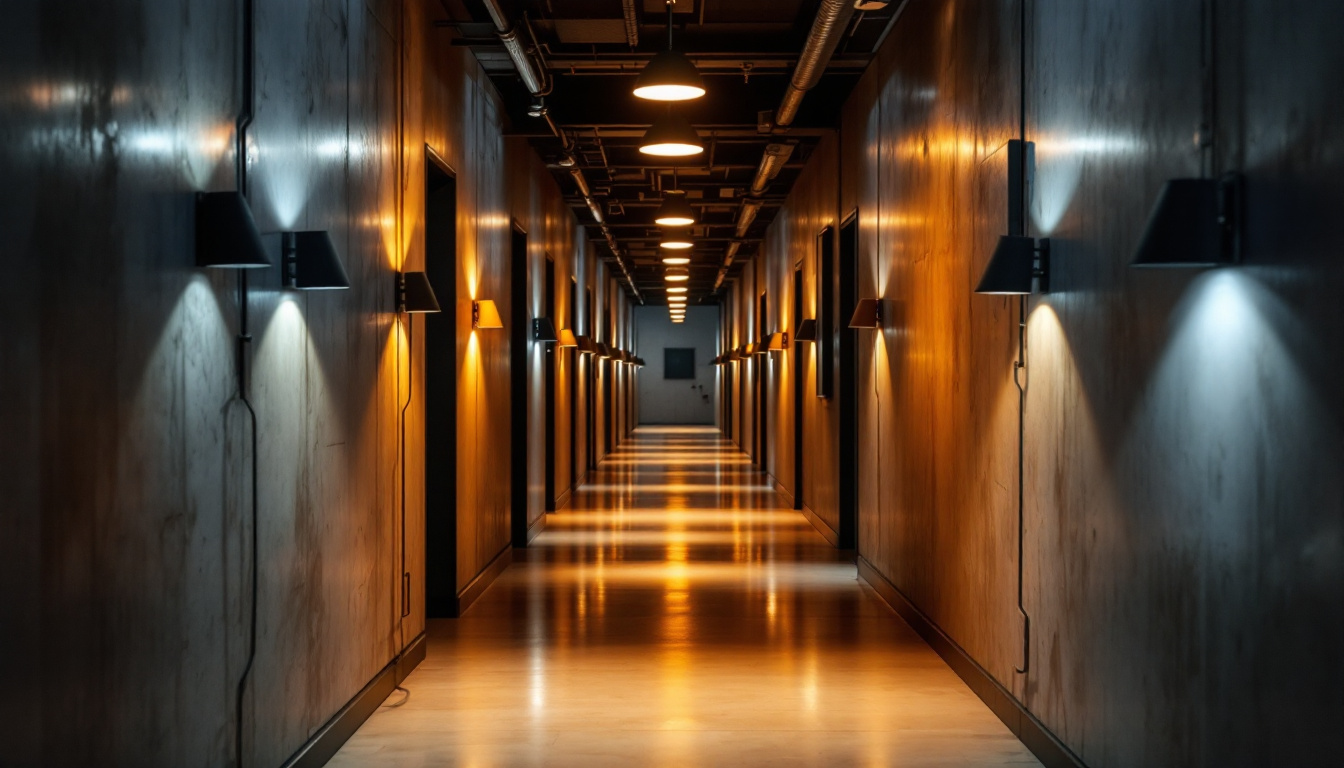

In the world of lighting installation and design, the importance of proper tools cannot be overstated. For lighting contractors, having the right equipment not only enhances efficiency but also ensures the quality and safety of the work performed. This article delves into the essential tools required for lighting contractors, particularly in dim and light hallway settings, where the balance of illumination can significantly impact aesthetics and functionality.
Hallways serve as transitional spaces in homes and commercial buildings, often overlooked in terms of design and lighting. However, the right lighting can transform these areas, making them inviting and safe. Proper illumination in hallways can help prevent accidents, guide visitors, and enhance the overall ambiance of a space. A well-lit hallway can also create a sense of flow and continuity, connecting different areas of a building seamlessly. It sets the tone for the rest of the space, making it essential to consider how lighting choices can influence the mood and functionality of these often-neglected areas.
Lighting contractors must understand the unique challenges presented by hallways. These spaces often have limited natural light and can be narrow, making it crucial to choose lighting solutions that maximize visibility without overwhelming the area. This understanding lays the groundwork for selecting the right tools and equipment for the job. Additionally, factors such as ceiling height, wall color, and the presence of windows can significantly impact lighting decisions. For instance, lighter wall colors can reflect more light, making the space feel larger and more open, while darker colors may absorb light and necessitate brighter fixtures to achieve the desired illumination.
When considering lighting for hallways, contractors typically focus on three main types: ambient, task, and accent lighting. Each type serves a distinct purpose and requires specific tools for installation. The combination of these lighting types can create a layered effect, enhancing both functionality and aesthetics.
Equipped with an understanding of the importance of lighting and the types of lighting available, contractors can now focus on the essential tools that facilitate effective installation and design. The following tools are indispensable for any lighting contractor working in hallway environments.
A voltage tester is a vital tool for ensuring safety during installation. This device allows contractors to check for live wires before beginning any work, preventing electrical shocks and ensuring a safe working environment. There are various types of voltage testers available, including non-contact testers, which can detect voltage without direct contact with wires.
In dimly lit hallways, where visibility may be limited, a reliable voltage tester can provide peace of mind. Contractors should invest in a high-quality tester that is easy to use and provides accurate readings. Furthermore, understanding how to interpret the readings from a voltage tester is crucial; contractors must be trained to recognize normal voltage levels and identify any potential issues that may arise during installation. This knowledge not only enhances safety but also contributes to the overall efficiency of the project.
Wire strippers and crimpers are essential for preparing electrical wires for connections. Wire strippers allow contractors to remove insulation from wires without damaging the conductor, while crimpers are used to attach connectors securely.
In hallways, where multiple fixtures may be connected to a single circuit, having these tools on hand can streamline the installation process. Contractors should choose wire strippers with adjustable settings to accommodate various wire sizes, ensuring versatility in their work. Additionally, investing in high-quality crimping tools can significantly improve the durability of connections, reducing the likelihood of future electrical failures. As lighting technology evolves, including the use of LED fixtures, contractors should also familiarize themselves with the specific wiring requirements of different lighting systems to ensure optimal performance and compliance with local codes.
A power drill is a cornerstone of any contractor’s toolkit. It is essential for installing light fixtures, mounting brackets, and other hardware. In addition to the drill, having a variety of drill bits is crucial, as different materials may require specific types of bits.
For hallway installations, where precision is key, a drill with adjustable speed settings can provide greater control. Additionally, contractors should consider using a stud finder to locate wall studs, ensuring that fixtures are securely mounted. Beyond the basic drill bits, specialized bits such as masonry or spade bits may be necessary for drilling into concrete or wood, respectively. This versatility allows contractors to tackle a wide range of installation scenarios, from retrofitting existing fixtures to installing new lighting systems in newly constructed hallways. Moreover, keeping a well-organized drill bit case can save time on the job, allowing contractors to quickly find the right bit for the task at hand.
While basic tools are essential, advanced equipment can significantly enhance efficiency and precision during lighting installations. The following tools are worth considering for contractors looking to elevate their work.
A laser level is an invaluable tool for ensuring that light fixtures are installed at the correct height and alignment. This tool projects a straight line across walls, allowing contractors to easily mark where fixtures should be placed.
In hallways, where alignment is crucial for aesthetic appeal, a laser level can save time and reduce the likelihood of errors. By providing a clear reference point, contractors can achieve a professional finish with minimal effort.
As technology advances, smart lighting control systems have become increasingly popular. These systems allow contractors to install lighting that can be controlled remotely via smartphones or other devices, offering convenience and flexibility for users.
In dim and light hallways, smart lighting can be programmed to adjust brightness based on the time of day or occupancy, enhancing energy efficiency. Contractors should familiarize themselves with various smart lighting options to provide clients with cutting-edge solutions.
Safety should always be a top priority for lighting contractors. personal protective equipment, including safety glasses, gloves, and hard hats, is essential for protecting against potential hazards during installation.
In dimly lit hallways, where visibility can be compromised, wearing appropriate PPE can prevent accidents and injuries. Contractors should ensure that they have the necessary safety gear before beginning any project.
Beyond having the right tools, understanding best practices for hallway lighting installation can enhance the overall quality of work. Here are some key considerations for lighting contractors.
Before beginning installation, it is crucial to plan the layout of the lighting fixtures. This involves determining the optimal placement of fixtures to achieve even illumination throughout the hallway.
Contractors should consider factors such as the width of the hallway, the height of the ceiling, and any architectural features that may impact lighting. A well-thought-out layout can prevent dark spots and create a welcoming atmosphere.
The choice of light bulbs can significantly affect the quality of lighting in a hallway. Contractors should consider factors such as color temperature, brightness, and energy efficiency when selecting bulbs.
For hallways, a color temperature of around 3000K to 4000K is often ideal, providing a warm yet bright light. Additionally, LED bulbs are recommended for their energy efficiency and longevity, making them a smart choice for both contractors and clients.
Once the fixtures are installed, it is essential to test the lighting before completing the project. This allows contractors to assess the effectiveness of the lighting and make any necessary adjustments.
Testing the lighting can help identify areas that may require additional fixtures or adjustments in brightness. By taking the time to ensure that the lighting meets the client’s expectations, contractors can deliver a high-quality finished product.
Lighting contractors play a vital role in enhancing the safety and aesthetics of hallways through effective lighting solutions. By equipping themselves with the right tools and adhering to best practices, contractors can ensure successful installations that meet the needs of their clients.
From basic tools like voltage testers and wire strippers to advanced equipment such as laser levels and smart lighting systems, each tool contributes to the overall efficiency and quality of the work performed. By understanding the unique challenges of hallway lighting and investing in the right equipment, contractors can elevate their services and deliver exceptional results.
Ultimately, the goal is to create well-lit, inviting hallways that enhance the overall experience of any space. Through careful planning, attention to detail, and the use of essential tools, lighting contractors can achieve this goal and leave a lasting impression on their clients.
Ready to take your hallway lighting projects to the next level? At LumenWholesale, we provide lighting contractors like you with the highest quality, spec-grade lighting products at prices that can’t be beaten. Say goodbye to local distributor markups and hello to our extensive selection that meets rigorous industry standards. With free shipping on bulk orders, you can stock up on reliable, high-performance lighting solutions that will make every space shine. Don’t compromise on quality or value—choose LumenWholesale for the perfect fusion of affordability and convenience. Elevate your lighting installations today by visiting Wholesale Lighting at the Best Value.

Discover how kitchen LED ceiling lights can enhance your business profits with our comprehensive guide tailored for lighting contractors.

Discover why LED light fixtures are a game-changer for garage spaces and essential for lighting contractors.

Discover essential insights for lighting contractors in the realm of outdoor illumination.

Discover the latest trends in outdoor flood lighting that every lighting contractor needs to know.
Get notified when NEW deals are released.
Optimize your budget with wholesale discounts.
Only top-quality, specification-grade lighting products.
No additional costs at checkout - what you see is what you pay.
We understand the unique needs of contractors.